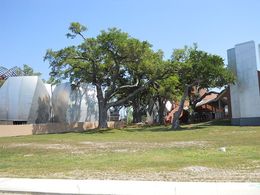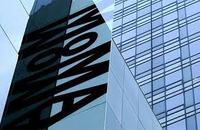 Today’s the big day for the Friends of the Barnes Foundation: they are getting their day in court. At 1:30 p.m., attorney Samuel C. Stretton will argue before Montgomery County Orphans’ Court Judge Stanley R. Ott that matters regarding the Barnes Foundation, its governance and the plan to transfer its art collection to Philadelphia from its home in Lower Merion Township should be reopened.
Today’s the big day for the Friends of the Barnes Foundation: they are getting their day in court. At 1:30 p.m., attorney Samuel C. Stretton will argue before Montgomery County Orphans’ Court Judge Stanley R. Ott that matters regarding the Barnes Foundation, its governance and the plan to transfer its art collection to Philadelphia from its home in Lower Merion Township should be reopened.
Even getting this far before the court is, I think, an achievement.
Stretton will, according to a press release issued by the Friends group (which now numbers 5,000, the release says):
…cite newly available evidence of misconduct on the part of then-Attorney General Michael Fisher as revealed in “The Art of the Steal,” a documentary by Don Argott and Sheena M. Joyce. The statements by former Attorney General Fisher in the film reveal his active involvement with Lincoln University’s decision to drop their legal opposition to the Barnes Foundation’s petition seeking expansion of its Board and permission to transfer Albert C. Barnes’ art collection from Lower Merion to Philadelphia. Those actions, and the fact that the Court was not informed about them invalidated the role of the Pennsylvania Attorney General’s office as parens patriae for the Barnes Foundation, a charitable entity. …This is significant because Lincoln University was the only party with legal standing to intervene other than the Attorney General.
I’m no lawyer, but it seems to me that today may not be the last day in court for this matter.
You can read the Friends’ legal case on its website, including the full petition to reopen the case.



 The committee report proposes $626,971,000 for the Smithsonian’s operating budget, which is $7,918,000 below the fiscal year 2011 enacted level and $9,559,000 below the budget request. That’s less than a 2% drop vs. last year’s enacted budget — which is a very small drop versus other agencies.
The committee report proposes $626,971,000 for the Smithsonian’s operating budget, which is $7,918,000 below the fiscal year 2011 enacted level and $9,559,000 below the budget request. That’s less than a 2% drop vs. last year’s enacted budget — which is a very small drop versus other agencies.